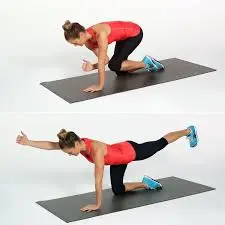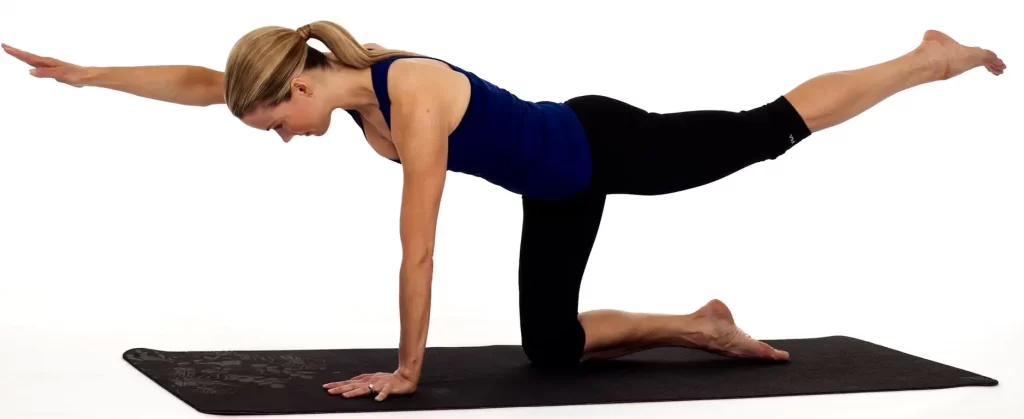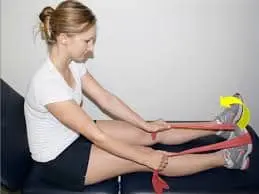Bird-dog Exercise
What Is A Bird Dog Exercise?
The Bird-Dog exercise is a fundamental core and stability movement often incorporated into fitness and rehabilitation routines. It targets the core, lower back, glutes, and shoulders, promoting balance, coordination, and strength.
This low-impact exercise is suitable for people of all fitness levels, helping improve posture and spinal alignment while reducing the risk of injury. Its simplicity and effectiveness make it a go-to choice for enhancing overall stability and body control.
What Muscles Does a Bird Dog Exercise Work?
Your core is one of the muscles used in a bird dog workout. These muscles are found in your buttocks, hips, back, and abs.
Gluteal muscles (glutes). Your hips and buttocks contain this set of muscles. They include:
- Gluteus maximus. The primary muscle in charge of hip extension is this one. It is the muscle group that lifts your leg backward while you walk.
- Gluteus medius and gluteus minimus. Your hip adduction, or leg movement, is controlled by these muscles.
Your lower body may not be properly positioned if your glutes are weak. Your hamstrings and quadriceps may be overused as a result, leading to problems like the runner’s knee. Lower back pain can also be caused by weak glutes.
Abdominal muscles. These muscles support your trunk, facilitate mobility, and regulate the pressure inside your abdomen.
There are four main abdominal muscle groups:
- Transversus abdominis. Your trunk is stabilized and internal abdominal pressure is maintained by this innermost layer of muscles.
- Rectus abdominis. This is situated between your pubic bone and ribs at the front of your pelvis.
- External oblique muscles. These muscles are found on both sides of the rectus abdominis. Your trunk can twist because of them.
- Internal oblique muscles. Just inside your hip bones are these. Unlike your external oblique muscles, they work in the other direction.
Back muscles. Your back muscles support your trunk and spine and make movement easier. The back contains numerous sets of muscles:
- Extrinsic or superficial back muscles are located near the skin’s surface.
- Intermediate muscles are those located between your shoulder blades.
- Intrinsic muscles. The erector spinae and transversospinalis groups are among these deep-lying muscles.
Benefits of Bird-dog Exercise:
Regularly performing this workout has the following health advantages. :
For a variety of reasons, quadrupeds are an excellent workout. There are numerous health advantages, including increased abdominal muscle strength, improved hip and shoulder mobility, increased gluteal, core, and shoulder muscle strength, as well as increased hip, shoulder, and spine flexibility and weight-bearing exercise.
The quadriceps exercise strengthens the erector spine muscles and other surrounding muscles to support the trunk, maintain or correct bad posture, and reduce the risk of injury.
Enhance your posture. If you suffer from weak postures like kyphosis or scoliosis, this is the best workout that a physiotherapist can offer.
By using the quadruped posture exercise as a weight-bearing exercise to activate joint receptors and enhance spinal stability and balance, the Bird Dog exercise can also be helpful for paralyzed patients.
How to do Quadruped Position Bird-dog exercise

You will need an exercise soft mat to perform this exercise. For added padding, place a folded towel or tiny pillow beneath your knees. A mirror can also be used to assess your progress and posture.
- You can do this by placing your knees under your hips and your wrists under your shoulders while standing quadrupedally on a soft mat. Make an effort to keep your knees as straight as possible.
- To see the floor, pull your jaw into your chest and extend your neck toward the back.
- Return to the quadruped position after holding this posture for five to ten seconds.
- Go back to where you were before. This is a single round.
- Perform 2-3 sets of 10–15 reps.
Bird Dog Exercise Video
How many times must you perform this?
Sets and repetitions: three rounds of eight to twelve repetitions each.
Progression of Quadruped exercise
Quadruped exercise with right arm raise only:
Hold yourself in a quadrupedal stance with your hands fully down to your shoulder and your knee down to your hip joint. After that, raise your right arm and take a slow breath. Your back will be straightened throughout this five to ten-second hold. Breathe now and slowly drop your arm.
Quadruped exercise with left arm raise only:
Hold yourself in a quadruped position with your hands fully down to your shoulders and your knees down to your hips. Breathe deeply, then raise your left arm. Your back will be straightened throughout this exercise, which you should hold for five to ten seconds. Breathe now and slowly drop your arm.
Quadruped exercises with right leg raise only:
The following stage requires you to lift one leg. Your legs weigh more than your arms. Assume a quadrupedal position, straighten your back, inhale slowly, and then raise your right leg. After holding this posture for five to ten seconds, carefully lower your leg and release the air. You have to lift your leg above your hips.
Quadruped exercise with left leg raise only:
Assume a quadrupedal position, straighten your back, inhale slowly, and then raise your left leg. After holding this posture for five to ten seconds, carefully lower your leg and release the air. It would help if you truly reached your leg from hip height.
Exercises for quadriceps that involve simultaneously lifting the opposing arm and leg:

Combining the two quadruped exercise types above into a single movement is the most challenging variation. Assume a quadrupedal position, straighten your back, inhale slowly, and then raise your left leg and right arm. After holding this position for five to ten seconds, carefully lower your arm and leg and exhale. You will discover that this practice is more difficult than it appears once you have mastered it. Gradually return your arms and legs to their former positions.
When raising your arm, make sure your trunk remains upright. As you elevate your legs, do the same.
Step-by-step execution is preferable to incorrect patterns or subpar forms.
When did you not do this exercise?
Here is a list of circumstances in which you shouldn’t perform this exercise:
- pregnant women
- chronic back injury
- currently healing from a back injury
- if exercise is painful
- if knee pain is present
FAQs
What are bird dog exercises good for?
The bird dog exercise targets three muscles: the rectus abdominis, glutes, and erector spinae. The proper mobility, stability, and control of the entire body are made possible by these muscles. It’s the perfect workout for those who have low back issues, such as hypermobility, and it helps improve posture and balance.
How long should I spend doing a bird dog?
With your leg raised behind you, you maintain this posture for roughly six to eight seconds. After that, you slowly swing it down before lifting it back up on the same side. Hold each repetition for six to eight seconds, and try to complete five.
How many reps for bird dog exercise?
Start with two to three sets of six to ten repetitions on each side for bird dogs. Your ability to maintain proper technique throughout each set and repetition will determine your chosen sets and repetitions. 1. To begin, place yourself on all fours with your knees and toes bent and touching the ground.
Can I do bird dogs every day?
To help with mobility and back stiffness, we at Elite Chiropractic & Sport suggest bird dogs to our patients as a simple workout that they may perform every day or a few times a week.
References:
- Physiotherapist, N. P.-. (2024, September 19). Quadruped Position Bird-dog Exercise: How to Do it, Benefits. Mobile Physiotherapy Clinic. https://mobilephysiotherapyclinic.in/quadruped-position-bird-dog-exercise-how-to-do-it-benefits/
- Cronkleton, E. (2023, October 27). How to Perform the Bird Dog Exercise and Its Core Benefits. Healthline. https://www.healthline.com/health/bird-dog-exercise#alternative-exercises
- Tan, S. (2024, June 9). How to Do a Bird Dog Exercise. WebMD. https://www.webmd.com/fitness-exercise/how-to-do-bird-dog-exercise





